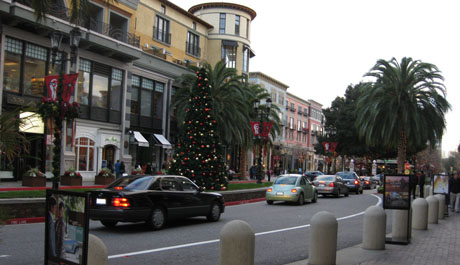For over 10 years, San Jose has been struggling with implementing a Habitat Conservation Plan (HCP). HCP is a regulation imposed by the Federal government to restore natural habitats and preserve wildlife, like the spot checkered butterfly and the burrowing owl. HCP is an unfunded mandate from the Federal government levied on local government. Federal agencies are not big on waivers or tweaks, as they have one goal and that is the regulation and job security.
The main premise is that any and all new development—even if rebuilding an existing structure—would pay a substantial fee under an adopted HCP. This fee would create yet another hurdle for economic development in the name of saving wildlife. To some, this may just be fine since wildlife may have a higher value than economic development, like jobs. To others, they may not care since much of the wildlife in San Jose actually resides in much of California. Relocating burrowing owls, for example, within the existing city infrastructure to outside the city is frowned upon.
For others, who would rather see near zero development in San Jose, they will very much enjoy the potential outcome of a HCP. The implementation of a HCP would potentially cease development and have San Jose become more expensive than surrounding cities like Santa Clara, Sunnyvale and Milpitas. Now that we have an adopted General Plan that emphasizes development of land for jobs, this is a great time to encourage economic development. However, with this new fee, San Jose could lose out on new job growth, and, as a consequence, tax revenue. The cities to our north in Santa Clara County are exempt from the HCP, because they are built out and San Jose, on the other hand, is punished for implementing a green belt. The HCP would include Morgan Hill and Gilroy.
Other areas like San Diego have enabled residents to decide this question by taxing themselves via sales tax or parcel tax. The premise of the HCP is that there is a high value to preserving the natural habitats of certain animals and restoring habitats. If it is such a high value, then residents may choose that value when they vote to tax themselves for that value. If it is not highly valued by the electorate, then we will have to go down the road of taxing all future development to pay for the sins of the past. Implementing the plan at one point would have cost $1.2 billion, and it has been scaled down to $660 million. I would propose this question be placed on the 2014 ballot.
If nothing was done, Federal agencies would not approve permits for new construction. New construction creates water and that water must go somewhere like a storm drain—and that requires federal approval. It could also block public infrastructure improvements, such as a bridge or rebuilding of theWater Pollution Control Plant. Coyote Valley and the Almaden reserve are areas that provide ample land for habitat. Building within the city infrastructure is the prudent thing to do, but not if the tax is so high or a burrowing owl is on a parcel within the city existing city infrastructure, like North San Jose. For example, if HCP was in place today San Jose would have had to pay $170,000 fee for the Convention Center expansion. (Convention Center expansion is being paid for by the hotels, which have increased the hotel tax paid by overnight guests.)
The cost, $170,000, may not sound like much since we talk about billions all the time with Federal and State dollars, but at the local level that level of fee could dissuade new development, like the large office building the City Council unanimously approved for Santana Row last month. Another way to look at it is the city of San Jose has removed fees to promote building in downtown and North San Jose, and this new HCP fee would negate this effort.
I’m not sure how things became so disconnected between economic development and providing federal funding to comply with federal regulation. Be sure to ask your elected Federal representative. This topic will be discussed at this week’s council meeting.

